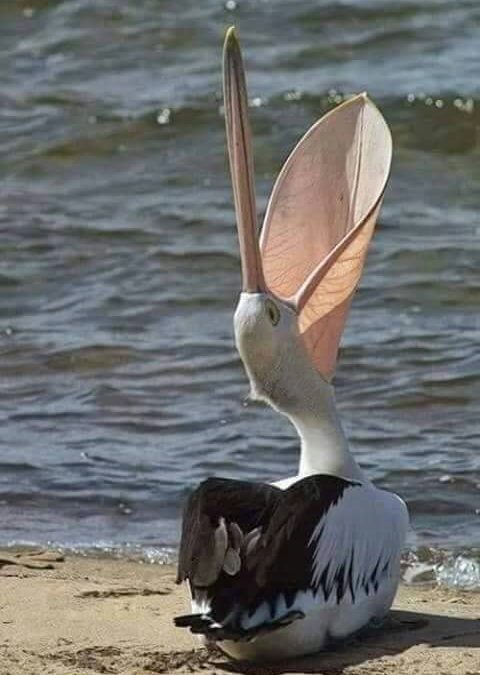Rain Bird, Chātak Pakshī, eagerly waiting to quench its thirst
with the rain drops of Swāti Nakshatra
The holy period of Chaturmaas in 2017 will commence from July 4 and come to an end on October 31. [Literally, four, chatur, months, maas]
In most spiritual traditions in India, monks generally do not travel during this period. They stay at one place and use this period for introspection and imbibing silence and peace and to share their knowledge with the laity. The idea is that during the rainy season, lot of seasonal insects are born. Sometimes they are very small in size and could not be seen with bare eyes. So, there is a possibility that they may get killed, unintentionally. This is especially true of Jain and Buddhist monks. The basic idea is to cause no harm to any living being.
During this season and all seasons, let’s take a vow not to cause any harm to any living being– in thought, word, and deed.
The monsoon season is upon us in India now!
The monsoon season is very special indeed. In Hindu mythology and poetry, chātak pakshī (चातक पक्षी), the rain bird, is considered the harbinger of monsoon rains. Called the pied cuckoo (Clamator jacobinus), a migrant from Africa, south of the Sahara Desert, this bird makes a sudden appearance in many areas of central and northern India.
It waits for the monsoon rains to quench its thirst. We are told that this bird only drinks rain water drop by drop as it pours down. However thirsty it may be, it does not drink any other kind of water, not from the streams, rivers or collected rainwater. It is said that this bird can live for many days without water. But when it gets thirsty it calls on megha (the rain lord) to make rain. And it is said that its call is always answered.
[https://waterforfree.wordpress.com/…/the-bird-that-only-dr…/]
Why mention this bird?
This bird is often cited by the Indian sages as an example of an ideal spiritual seeker who ignores all things worldly and quenches its thirst of knowledge, jijñāsā, by drinking the nectar of Self-knowledge, straight from the Divine springs within (स्वाति की बूँदें: Swāti ki boondein).
Sant Shiromani Tulsi Das presents it beautifully:
गंगा यमुना सरस्वती सात समंदर भरपूर
तुलसी चातक के मते बिन स्वाति सब धूर
While the rivers of Ganga, Yamuna, and Sarasvati and the seven seas brim aplenty with water.
O Tulsi, in the Chātak bird’s view, everything without the drop of स्वाति is, as though, mere dust.
As my dear friend, Sriman Brij Sehgal who also shared the rare image of the rain bird, explained: If you truly love someone, then every exalted thing in the world pales in their comparison. Even so, despite the fact that the rivers and seven seas of the world contain immeasurable water, for this special rain bird, it means nothing. With its beak pointed toward the heavens, it just waits and waits for a particular drop of water during the Swāti Nakshatra. Please note the cup-like beak of the bird, as if the Mother Nature has developed the organ in proportion to the need!
This shows the intensity of desire, jijñāsā.
We should have such one-pointed intensity for Self/God-realization.
It is also believed that when Miyan Tansen, a court musician of emperor Akbar, used to sing raga Miyan Malhar; and, on certain occasions when the celestial forces will align, it used to augur rain.
If you want to sample the power of such music to move mountains, we invite you to listen to the following sublime rendition of raga Miyan Malhar by the flute maestro, Pt. Pannalal Ghosh. This is the kind of flute-playing that would have pleased Lord Krishna:
For connoisseurs of North Indian classical music, we present below Miyan Malhar like no other, sung by Pt. Bhimsen Joshi-ji:
And finally, Ustad Salamat Ali & Ustad Nazakat Ali present- Miyan Malhar sung live during 1960s in Kabul:
This is the kind singing that could augur rain on a hot summer day.
Those who have been initiated in the art and science of Indian classical music will be able to appreciate the beauty behind these sentiments.
Is this all true? It really does not matter. What matters is that it is exquisitely beautiful!
And if we go by what John Keats said, beauty has its claims at least as much as the truth:
‘Beauty is truth, truth beauty,—that is all
Ye know on earth, and all ye need to know.’ ~John Keats, Ode on a Grecian Urn
And we are told by none less than Shakespeare: “Hang up that philosophy that cannot create a Juliet!”


Recent Comments